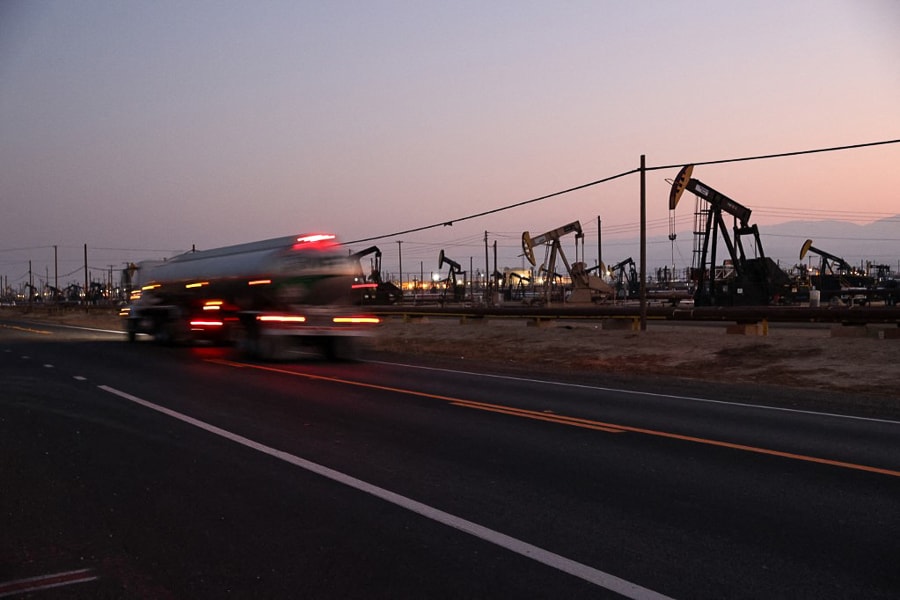
Energy sector methane emissions 70% higher than reported: IEA
The global energy sector's methane emissions are massively underreported, the International Energy Agency said in a report, seeking more transparency and stronger policy action
 A truck passes pumpjacks in the Belridge oil field on November 03, 2021 near McKittrick, California. The Biden administration pledged to cut methane emissions from oil and gas production yesterday. In California, 35,000 oil and gas wells sit idle, many of which are unplugged and could leak methane gas. Scientists estimate that one-third of human-induced global warming is caused by methane. (Credits: Mario Tama/Getty Images via AFP)
A truck passes pumpjacks in the Belridge oil field on November 03, 2021 near McKittrick, California. The Biden administration pledged to cut methane emissions from oil and gas production yesterday. In California, 35,000 oil and gas wells sit idle, many of which are unplugged and could leak methane gas. Scientists estimate that one-third of human-induced global warming is caused by methane. (Credits: Mario Tama/Getty Images via AFP)
The energy sector's overall emissions of methane are massively underreported, the IEA said Tuesday as it promoted cuts to the most potent greenhouse gas as a quick way to make a major impact on global warming.
The International Energy Agency said its latest annual Global Methane Tracker had found that emissions by the energy sector were about 70 percent higher than official government figures.
It said this showed the need for greater transparency as well as "stronger policy action to drive down emissions of this potent greenhouse gas," responsible for some 30 percent of the rise in global temperatures since the Industrial Revolution.
While methane dissipates faster than carbon dioxide, it has a much more powerful warming effect in the atmosphere.







